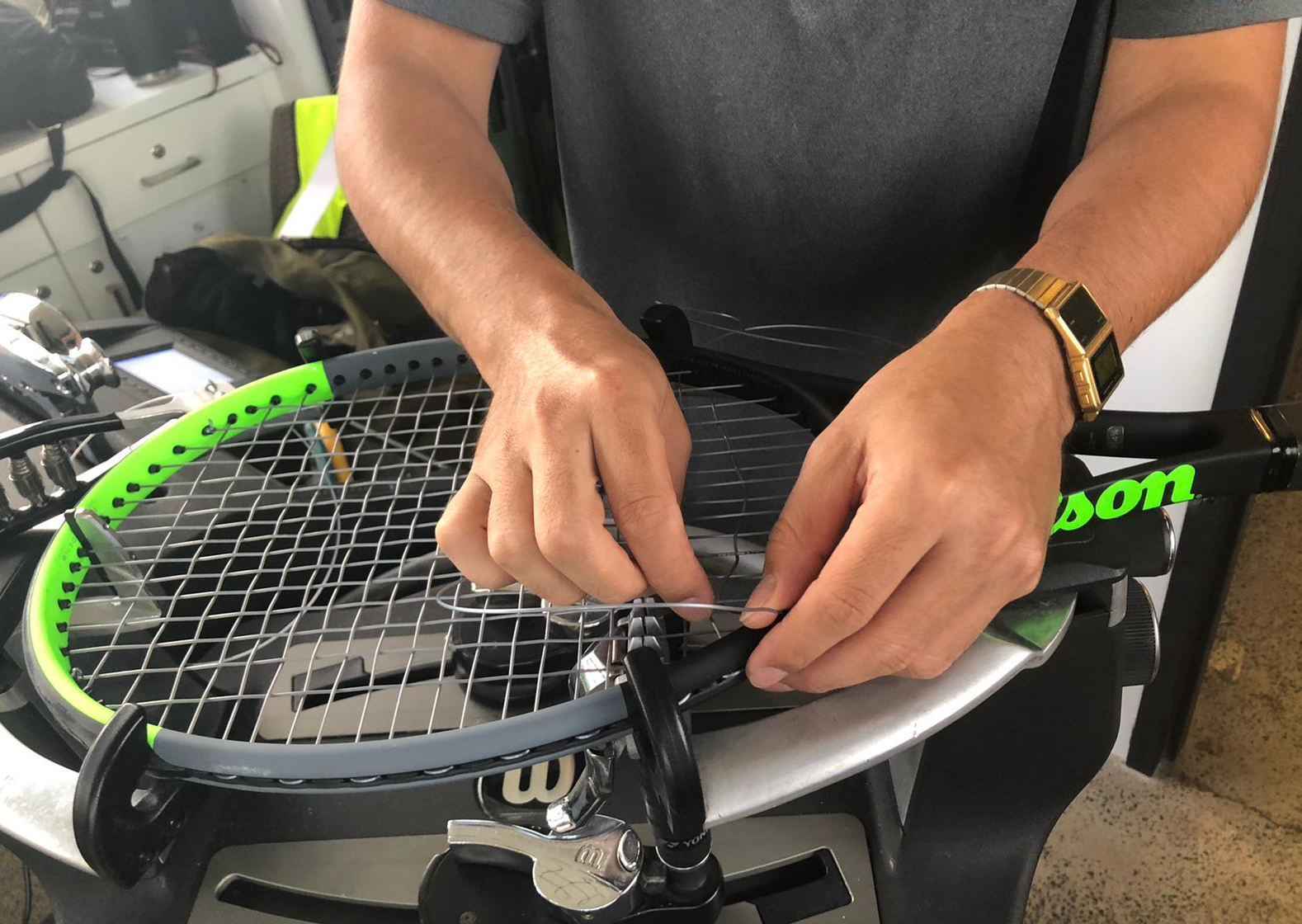
You’ve got your tennis racquet. You’ve chosen the right tennis string. Now it’s time to marry the two together with a tennis string tension that’s suitable for the racquet and your game style. It’s not as complicated as you may think. We’re here to help you elevate your game and break down the technical details so you know what string tension to tell your stringer the next time you need a restring.
Long story short, you get more control with a higher tension but it also means you get less power. Vise versa, a lower tension provides more power but less control. String tension is the final piece in the racquet-string-tension triad.
Typically a racquet will feature a recommended tension range somewhere near the throat of the racquet. (This range has been determined by the manufacturer as a result of playtesting by real tennis players.)
A beginner tennis player may need more control but a tighter (higher) string tension is only part of the solution. This player also needs a soft stringbed that can absorb the weight of the ball from off-center hits. On the other hand, advanced players swing faster, hit harder and generally have better aim in terms of making contact with the center of their tennis racquet. Hence, the recommendation for advanced tennis players is a tighter string tension.
If you find the information about tennis racquet restring complicated, you can always choose a tension somewhere in the middle (a number) that’s on the throat of your tennis racquet then make any adjustments from there. An important rule of thumb to remember is lower tensions provide more power, tighter tensions provide more control.
We recommend picking a tension 1 or 2 pounds more than the middle of the recommended range on the throat of the racquet as racquet strings lose tension as soon as it’s finished being strung – around 10% or more within the first 24 hours before stabilising for a period of time. When the string tension drops, so does the elasticity of the strings. The player will then have to provide more of their own power for the same results of a freshly strung racquet as a result.
Tip: If you want to maximise your performance, be sure to regularly restring your racquet. The general rule for restringing is at least every 6 months, or as many times in a year as you play in a week. That means if you play 4 days a week, you should be restringing at a minimum of four times a year.

We’ve summarised a list of possible needs below for consideration when your racquet goes for a restring.
Power
Tip: Decrease 1-2 pounds in tension.
Why: Stringbed will deflect more and the ball less which results in returning greater energy to the ball.
Note: The stringbed will eventually become too light, but it’s well below any racquet’s recommended tension range.
Control
Tip: Increase 1-2 pounds in tension.
Why: Stringbed will deflect less and the ball more which results in giving less energy to the ball. The ball won’t fly as far when you hit it.
Note: This is for intermediate and advanced players who hit a lot of long balls and will help to reduce the depth of their shots. Not helpful for beginners who are shanking the ball in every direction.
Arm Injuries
Tip: Lower tension.
Why: Makes for a softer stringbed and a larger sweet spot to reduce the amount of shock and vibration transferred to the hand and elbow.
Note: No lower than the recommended range on the throat of your racquet. Also loses control for more topspin and slice shots.
Switching Racquets
Tip: Change tension according to the new racquet’s recommended range and start from the middle.
Why: Different tennis racquets will have slightly different head sizes and different brands will have slightly different head shapes. If using the same string, a player should still correspond to the new racquet’s tension range.
Note: If possible, stick to the same string so all the components of the racquet-string-tension triad so the change is not complete and not hurting your wallet too much.

You must be logged in to post a comment.